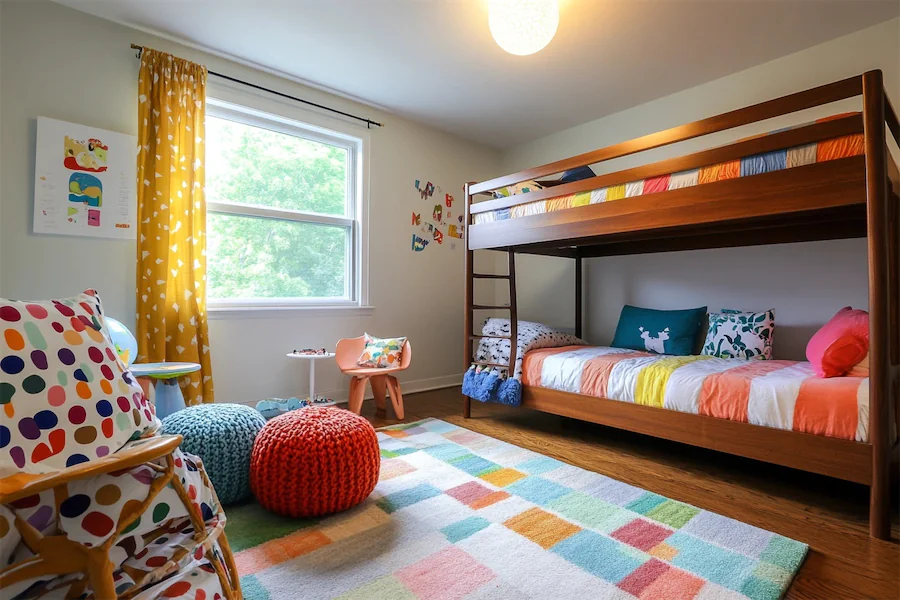Designing a mid-century modern kid’s room combines the timeless appeal of mid-20th-century design with the functionality and playfulness required for a child’s space. This style emphasizes clean lines, organic forms, and a harmonious blend of form and function, creating an environment that is both stylish and conducive to a child’s development.
Introduction to Mid-Century Modern Kid’s Rooms
Mid-century modern design originated in the mid-20th century, focusing on simplicity, functionality, and natural materials. In a child’s room, this translates to a space that is uncluttered, aesthetically pleasing, and adaptable to various activities such as play, study, and rest.
History and Origins of Mid-Century Modern Kid’s Rooms
The mid-century modern movement emerged post-World War II, reflecting a shift towards simplicity and practicality in design. This era introduced furniture and decor that were both functional and accessible, with an emphasis on mass production and affordability. Applying this style to children’s rooms brings a sense of nostalgia and enduring design principles that remain relevant today.
Key Features of Mid-Century Modern Kid’s Rooms
- Clean Lines and Organic Shapes: Furniture pieces often feature sleek, straight lines or gentle curves, contributing to a minimalist yet inviting atmosphere. For example, a dresser with tapered legs or a molded plastic chair can serve as focal points.
- Natural Materials: Utilizing materials such as wood, leather, and metal adds warmth and texture to the room. A wooden bed frame or a metal-legged desk embodies this characteristic.
- Functional Furniture: Pieces are designed with practicality in mind, often serving multiple purposes. A bookshelf that doubles as a room divider or a bed with built-in storage are practical choices.
- Bold Colors and Patterns: Incorporating vibrant hues and geometric patterns adds visual interest and stimulates creativity. Accent walls, rugs, or bedding in bold prints can enliven the space.
Applications of Mid-Century Modern Kid’s Rooms
- Sleeping Area: A platform bed with a simple headboard, complemented by patterned bedding, creates a comfortable and stylish sleeping nook. Adding a nightstand with clean lines and a retro lamp enhances the mid-century feel.
- Study Space: A minimalist desk paired with an ergonomic chair provides a dedicated area for homework and creative projects. Incorporating floating shelves above the desk offers additional storage without cluttering the space.
- Play Zone: An open area with a soft rug allows for free play, while modular storage units keep toys organized. Incorporating a vintage-inspired toy chest or a teepee can add charm and functionality.
Considerations When Designing a Mid-Century Modern Kid’s Room
- Safety: Ensure all furniture and decor items are child-friendly, with rounded edges and non-toxic finishes. Secure heavy pieces to the wall to prevent tipping hazards.
- Adaptability: Choose versatile furniture that can grow with your child, such as adjustable desks or beds that convert from toddler to twin size. This approach ensures longevity and cost-effectiveness.
- Personalization: Incorporate elements that reflect your child’s interests, such as framed artwork, personalized name plaques, or a display area for their creations, to make the space uniquely theirs.
Conclusion
A mid-century modern kid’s room offers a harmonious blend of style and functionality, creating an environment that supports a child’s growth and creativity. By focusing on clean lines, natural materials, and thoughtful design, you can craft a space that is both timeless and tailored to your child’s needs.
